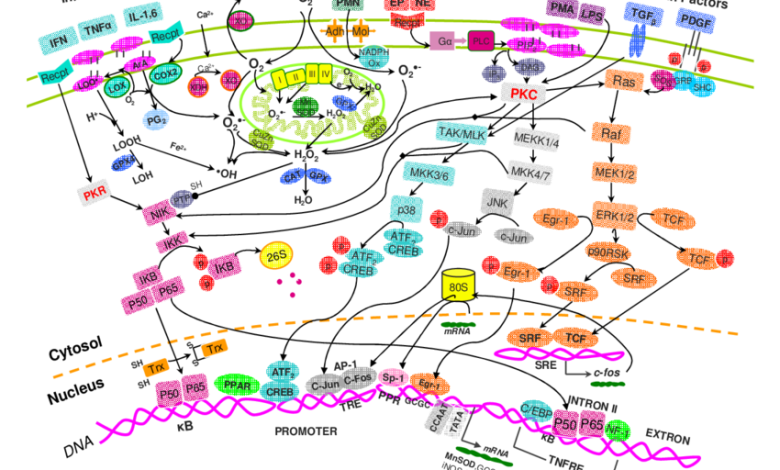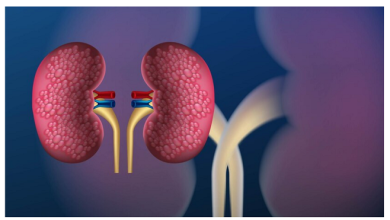5 Ways Redox Signaling Influences Cellular Health and Function

Redox signaling molecules are the messengers between your body’s pro-oxidants and antioxidants. They reset the function of proteins through reversible oxidation and reduction reactions, including sulfonation, S-glutathionylation, and S-nitrosylation.
Dysregulated redox homeostasis is intimately associated with the hallmarks of aging and disease. Internal and external factors like stress, toxic chemicals, bacterial infections, poor diets, and radiation can all interfere with this delicate balance.
Cellular Communication
Cells communicate and coordinate their cell performance with one another by releasing signaling molecules, which attach to the receptors of adjacent cells. This type of communication is called paracrine signaling, and it usually occurs over short distances. An example is neurotransmitters passing across a gap between neurons known as synapses.
Renu Advanced is another way cells communicate through releasing membrane-bound vesicles called exosomes, which carry MHC class II complexes and other endocytic particles from professional antigen-presenting cells (APCs) to T cells for recognition.
The membrane that surrounds each of your cells is made primarily of fats called phospholipids. These flexible lipids do not form ridges, allowing molecules to easily flow across the cell membrane. This is important because it allows your cells to receive and respond to signaling molecules from other cells. These signaling molecules are also known as second messengers. These signaling molecules control various biological processes, including gene expression, cell movement, hormone reception, and oxidative stress response.
Antioxidant Activation
Oxidant molecules, called free radicals or reactive oxygen species (ROS), are essential for many physiological processes at low concentrations and are responsible for killing invading microorganisms. They also act as important second messengers for regulating cellular signaling pathways and triggering various biological processes such as apoptosis or cell autophagy.
However, excessive generation of ROS is considered a significant cause of several pathological conditions, including neurodegenerative diseases. In the central nervous system, excessive oxidative stress induces the expression of diverse inflammatory mediators in brain resident cells like microglia and astrocytes. This is partially mediated by ROS-dependent activation of redox-sensitive transcription factors such as nuclear factor kappa B and activator protein-1.
The body has natural defense systems that can counteract these proinflammatory responses by producing antioxidants that can neutralize the oxidants and restore the redox signaling system balance. These include enzymatic and non-enzymatic antioxidants such as superoxide dismutases, catalases, glutathione peroxidases, and thioredoxin. However, the production of these antioxidants can be impaired by aging and some chronic diseases.
Immune Response
Like people in the real estate business say: “location, location, location.” In redox signaling, It translates to: “reaction kinetics, location, reaction kinetics.” The location at which the concentration of an electrophile is most significant should be near its source. This is especially true for protein cysteines that can form a thiolate-electron bond with singlet oxygen.
These messenger molecules are the communicators that ensure proper cellular communication between all your body’s cells to keep them healthy and protected from bacteria, viruses, and other infectious agents. They also activate antioxidants that neutralize oxidative free radicals and maintain a balance of oxidative and non-oxidative molecules.
Upon encountering antigens (bacteria, fungus, virus, toxin, or foreign body), redox signaling sends chemical signals that attract immune system leukocytes to the site of infection. Leukocytes are the white blood cells that identify pathogens as dangerous and then launch a response to eliminate them. Neutrophils are the first to respond by surrounding and absorbing microbes and breaking them down; granulocytes provide an early phase of inflammation; macrophages clean up by removing pathogens, dead neutrophils, and other debris.
Aging
Physiological levels of non-radical ROS function as multifaceted physiological modulators, orchestrating multiple redox sensors. Excessive ROS accumulation, known as oxidative stress, directly damages biomacromolecules and disrupts cell and tissue function (see the diagram below).
In normal cells, the intracellular enzymes SOD (cytosolic copper–zincSOD, or CuZnSOD, mitochondrial manganese SOD, or MnSOD2, and extracellular superoxide dismutase, or ecSOD) catalyze the conversion of H2O to O2-*. These reactions are essential for cellular signaling and protect against oxidative damage.
In normal cells, the redox sensor Keap1 has reactive cysteine residues that can form covalent conjugates with electrophiles such as lipid peroxidation products, quinones formed from polyphenol metabolites, and specific protein thiolates. The kinetics and location of these sites provide the specificity required for physiological signaling. However, increased ROS and electrophilic species during aging result in redox imbalance, mitochondrial dysfunction, protein misfolding and aggregate formation, abnormal membranes, and intercellular communication. These redox changes lead to age-related diseases.





